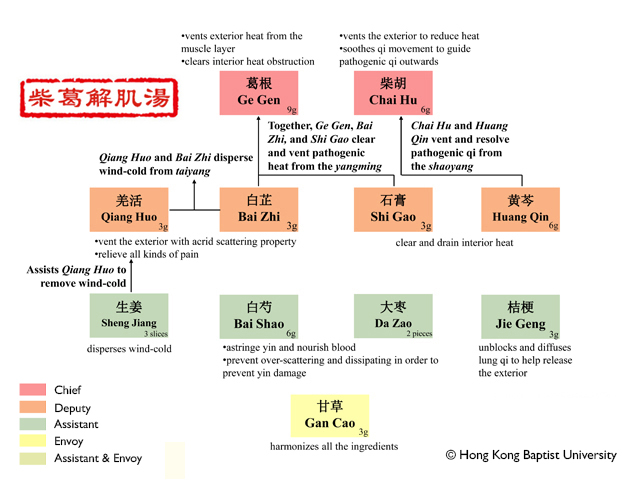
| Chief | Ge Gen |
| |
| Chief | Chai Hu |
| |
| Deputy | Qiang Huo |
| Qiang huo and bai zhi disperse wind-cold from taiyang. |
| Deputy | Bai Zhi |
| |
| Deputy | Shi Gao |
| |
| Deputy | Huang Qin |
| Chai hu and huang qin vent and resolve pathogenic qi from the shaoyang. |
| Assistant | Jie Geng |
| |
| Assistant | Shao Yao |
| |
| Assistant | Da Zao |
| |
| Assistant | Sheng Jiang |
| Assists qiang huo to remove wind-cold. |
| Envoy | Gan Cao |
|